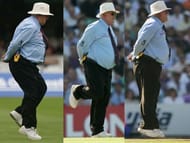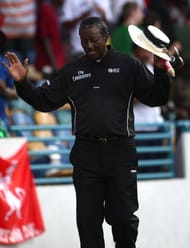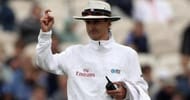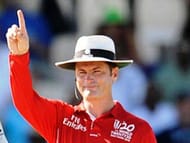The life of an umpire has always been a tough one, and the Decision Review System has only made it tougher. For one, great umpiring decisions are seldom celebrated: sometimes, just sometimes, such decisions get a five-minute coverage on commentary, even as poor ones are routinely magnified and dissected over many Test match sessions.
For another, the immovability of an umpire, not to say the immutability of his focus, is taken for granted, though sitting or standing still, as any layman, philosopher, or spiritualist will attest, is not an easy task.
Yet umpires are as much a part of cricketing lore as bowlers, batsmen and wicket keepers are. And no, not just because, as their job description says, they are the guardians of the game's laws and best traditions on the field.
Two Englishmen

Umpires are only human, and humanity invariably translates as imperfections, and styles, and, in short, as character. Of all the 'characters' who have officiated at cricket matches, none is perhaps more legendary than umpire Harold Dennis 'Dickie' Bird. Mr. Bird's idiosyncrasies are legion, and though he umpired for the last time in an international match when this writer was just eleven, no discussion on umpiring or umpires is ever complete for him without (at least) a ceremonial mention of the Yorkshireman.
The other character who comes to mind when one thinks of umpires, and whom this writer had the privilege of watching more, is David Shepherd -- yes, he of the Nelson-hop fame, who signalled batsmen out as though he were shooting them.
From a rougher-looking individual, such gestural violence would have seemed appropriate, even run-of-the-mill; from 'Shep', who was invariably a prosperous picture of amiability, it seemed like the extension of a faux alter ago even he did know much about. It is a shame that cancer, that most cowardly and torturous of grim reapers, had to take away one of the pinkest cheeks and loveliest smiles in the game.
Smiling executioner and slow death

Umpire Steve Bucknor, who towers at 6 ft 3 inches, also had a smile, but his was the all-knowing smile of the judge, the jury and the executioner. Accompanied by a couple of quick nods, it told the batsman at the opposite-crease-cum-witness-stand that there was no point waiting for (the inevitable) right-index finger, which when raised unarguably made Mr. Bucknor the tallest gent on the ground. This writer has never heard Mr. Bucknor speak, of course, but he likes to imagine that he might pronounce 'Andy Dufresne' as Morgan Freeman does, seeing as he looked (to this writer's eyes at least) like the latter, on the odd occasion that he removed his spectacles.
Unlike Steve Bucknor, Rudy Coertzen does not seem to have any Hollywood doppelgangers. Why would he need them, when he had the 'finger of slow death'? Whenever Mr. Coertzen's left-hand moved slowly from his side to its final position facing the batsman -- to accuse him of some unpardonable cricketing sin -- he seemed to be saying: "Think on that shot mate, think carefully, then think some more...now you can go back to the dressing room, and think again." It is probably fair to conjecture that Coertzen gave himself the finger of slow death, too, after finding out that he had wrongly sent Kumar Sangakkara packing for 192 at Hobart against Australia in 2007.
An entertainer and a professional

Batting is a game of small percentages even on flat wickets, so the last thing a batsman struggling for form wants is to see Billy Bowden go about his work. And what work he made out of signalling boundaries and sixes! Yet he, too, reserved his most compelling gesture for sending a chap back to the pavilion (making one wonder if umpires have an inexplicable dislike for fellows with a piece of wood in hand): a raised right index finger which, if it had been any more crooked, would have had hard-done spinners complain about illegal umpiring.
If New Zealander Billy Bowden made an engaging show of the essentially serious business that is umpiring, Australian Simon Taufel pared it down to its professional essentials. Not for him the signature moves of some umpires, nor the idiosyncrasies of others.
When Mr. Taufel signalled a boundary or a six, he was merely sending information to the scorers; when he gave a batsman out, he was merely doing his job. Substance was everything to the New Welshman, style nothing, or less than nothing. Perhaps, he was to umpiring what Cheteshwar Pujara is to batting and what Hemingway was to writing -- a minimalist genius.

It is natural for a sports fan to miss the stars (s)he grew up watching long after they are gone. This writer also misses, however, the umpires whose fairness made sure that some of those stars had long and fulfilling careers, and whose personalities and quirks served to highlight the accommodating nature of the game of cricket that many of us hold dear.
Brand-new app in a brand-new avatar! Download CricRocket for fast cricket scores, rocket flicks, super notifications and much more! 🚀☄️
